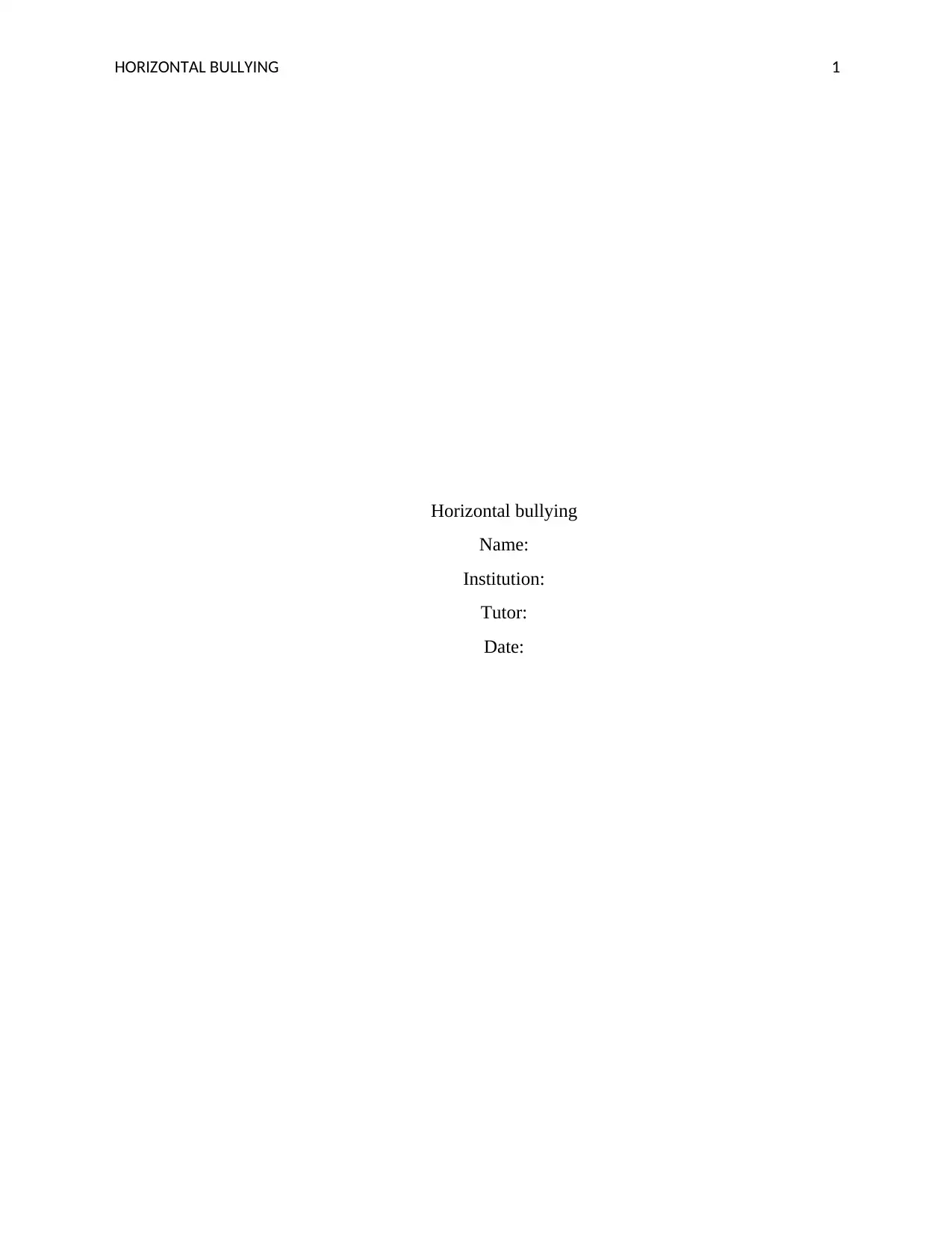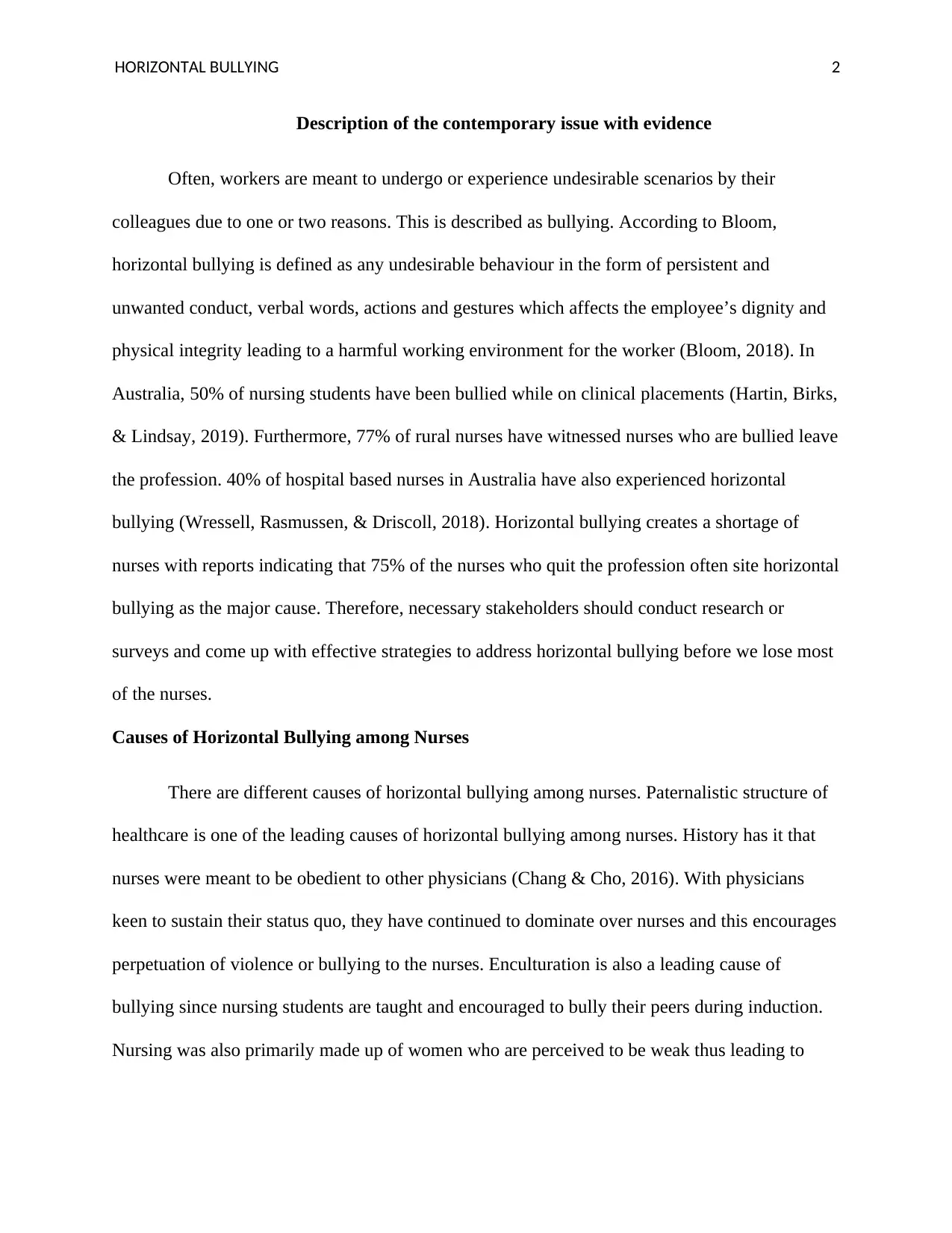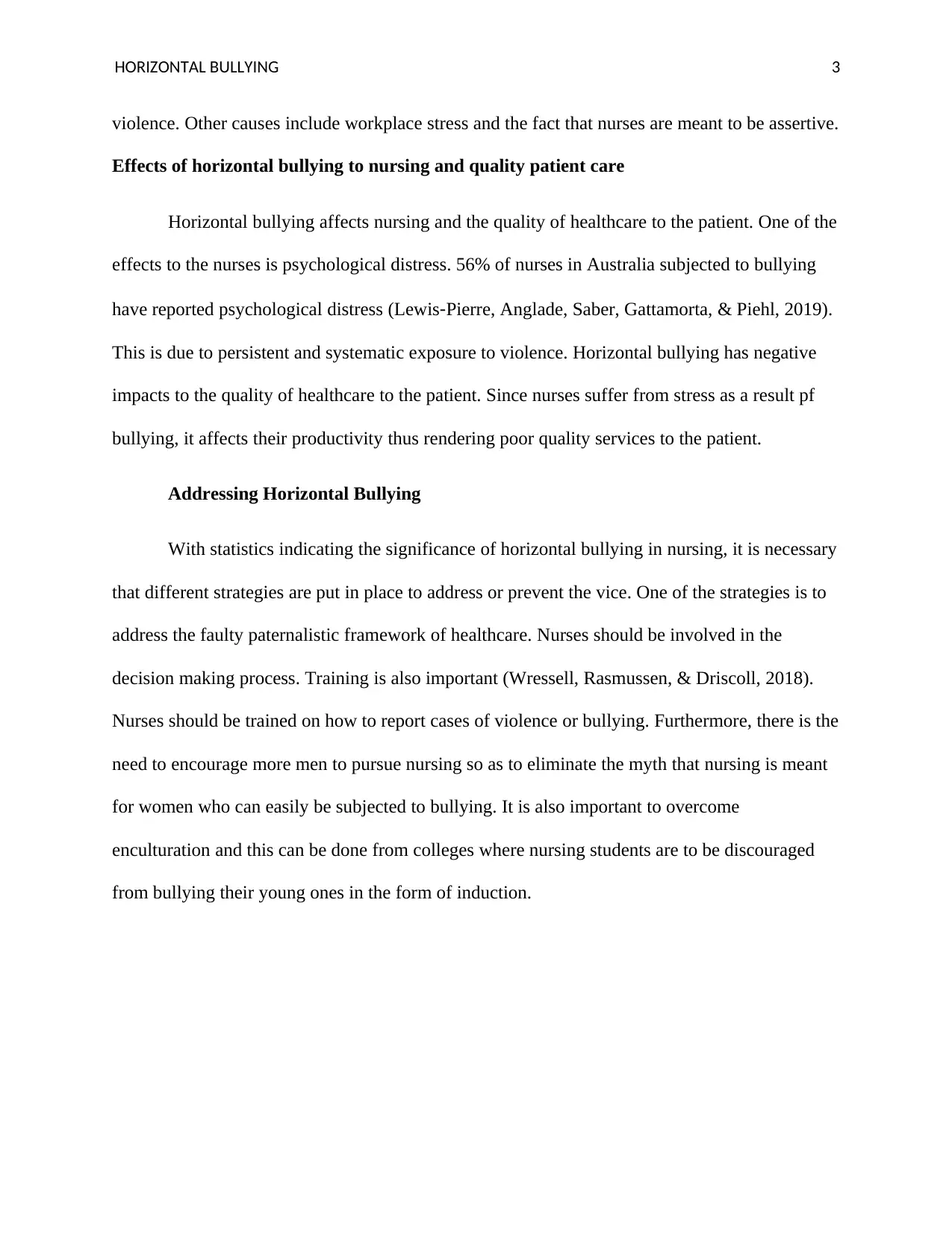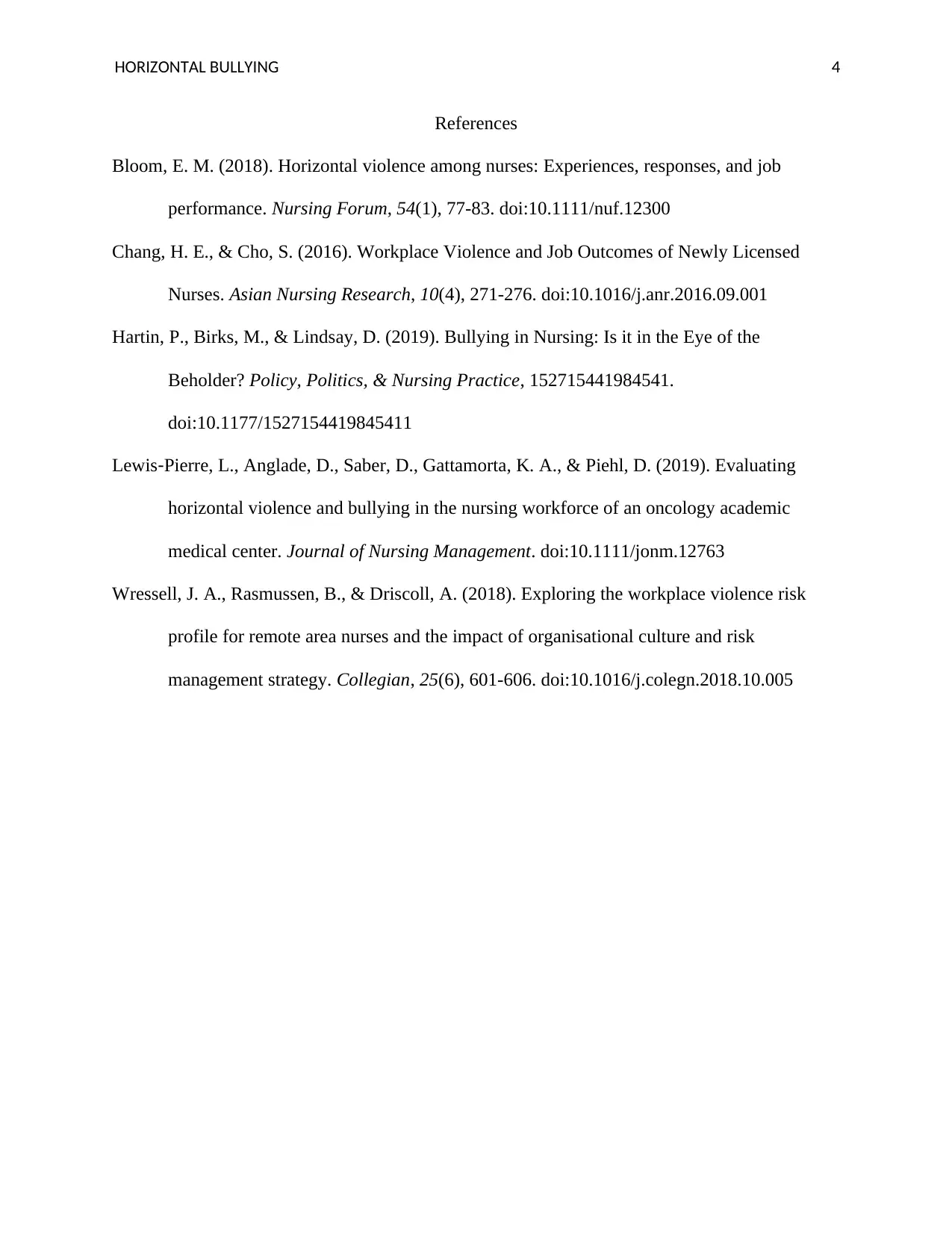Contemporary Issue: Horizontal Bullying in Nursing, Causes and Effects
VerifiedAdded on 2023/03/17
|4
|830
|34
Report
AI Summary
This report addresses the contemporary issue of horizontal bullying in the nursing profession, defining it as undesirable behavior that negatively affects nurses' well-being and work environment. It presents evidence of bullying, including statistics on its prevalence among nursing students and professionals, and its impact on nurse shortages. The report explores the causes of horizontal bullying, such as the paternalistic healthcare structure, enculturation, and workplace stress. Furthermore, it examines the effects of bullying on nurses, particularly psychological distress, and its impact on patient care quality. The report concludes by suggesting strategies to address and prevent horizontal bullying, including modifying the healthcare framework, providing training, and overcoming enculturation, supported by relevant research and references.
1 out of 4











![[object Object]](/_next/static/media/star-bottom.7253800d.svg)